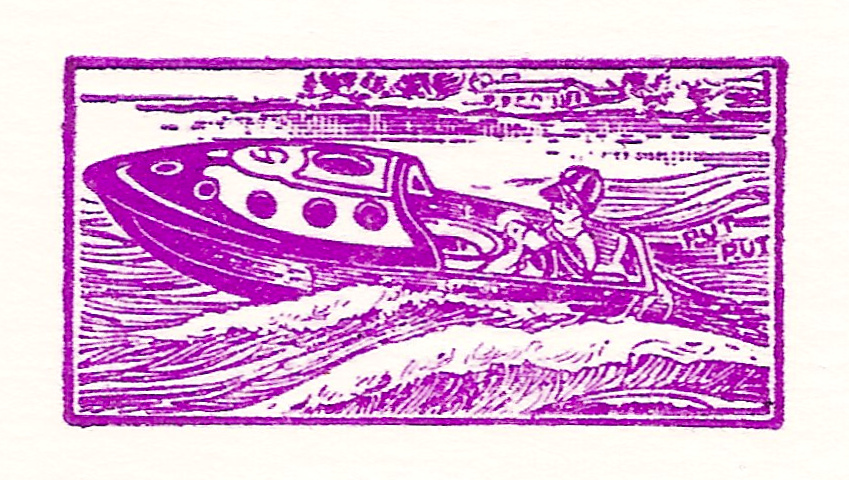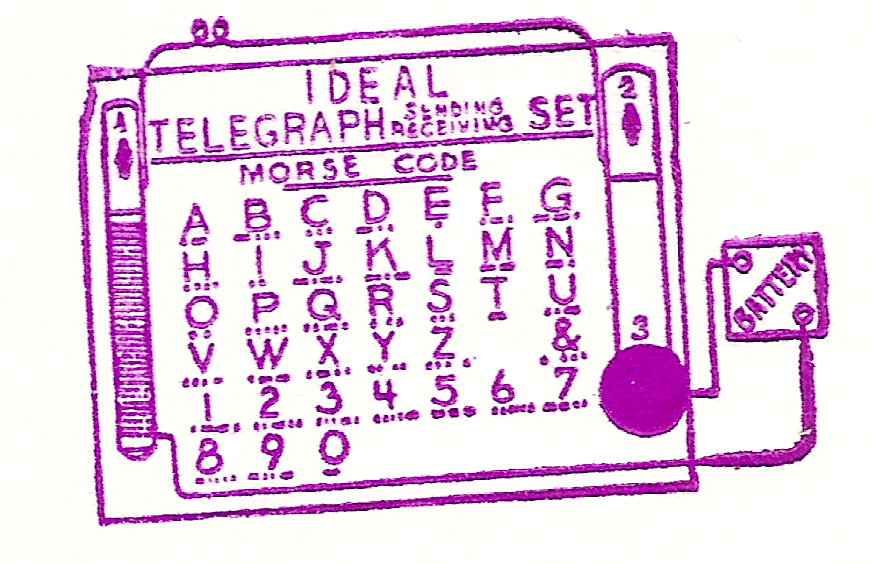I took a trip out to Campbell’s Printing in Tryon this morning – they are retiring after more than 30 years in the business – to see what equipment and supplies they might be selling that might help me in my letterpress printing exploits. I came away with a near-lifetime supply of business card blanks, a couple of composing sticks, and a box full of various and sundry letterpress “cuts” – engravings in metal of graphics, logos and text.
Among the cuts was this one – the original is only 3cm wide so what you see here is digitally blown up many times – of a boat. You can only barely read the “Put, Put” in the original.

This “special offer” for shaving supplies (the original is 4cm wide):

And this intriguing “Ideal Telegraph Sending Receiving Set” graphic (original 3cm wide):

The Campbells are about the nicest printers you could ever meet, and they generously took me on a cook’s tour of their shop. There are a couple of larger items I’ve got my eye on now; just need to track down some downtown space capable of supporting 1,000 lb. pieces of machinery…
 I am
I am
Comments
Our business dealt with the
Our business dealt with the Campbells until they went out of business. Friendly, efficient service while dealing with a locally owned business—I like that. When they asked “how are you?” they really wanted to know. You don’t get that just anywhere.
The morse cut/graphic is
The morse cut/graphic is interesting — the model shown looks like it uses landline morse which is different from what most amateur radio types are familiar with.
My uncle was a telegrapher and was very fluent in both forms. I had difficulty catching on to the landline variant as you listen to ‘spaces’ and differences in the clicks generated by the sounder (left side of the graphic). Radio morse (international morse) is based on tones.
I was wondering what the
I was wondering what the implement above the stypic pencil was. My wife thinks its something to do with cleaning teeth by making room in the cheeks. Bizarre.
Add new comment